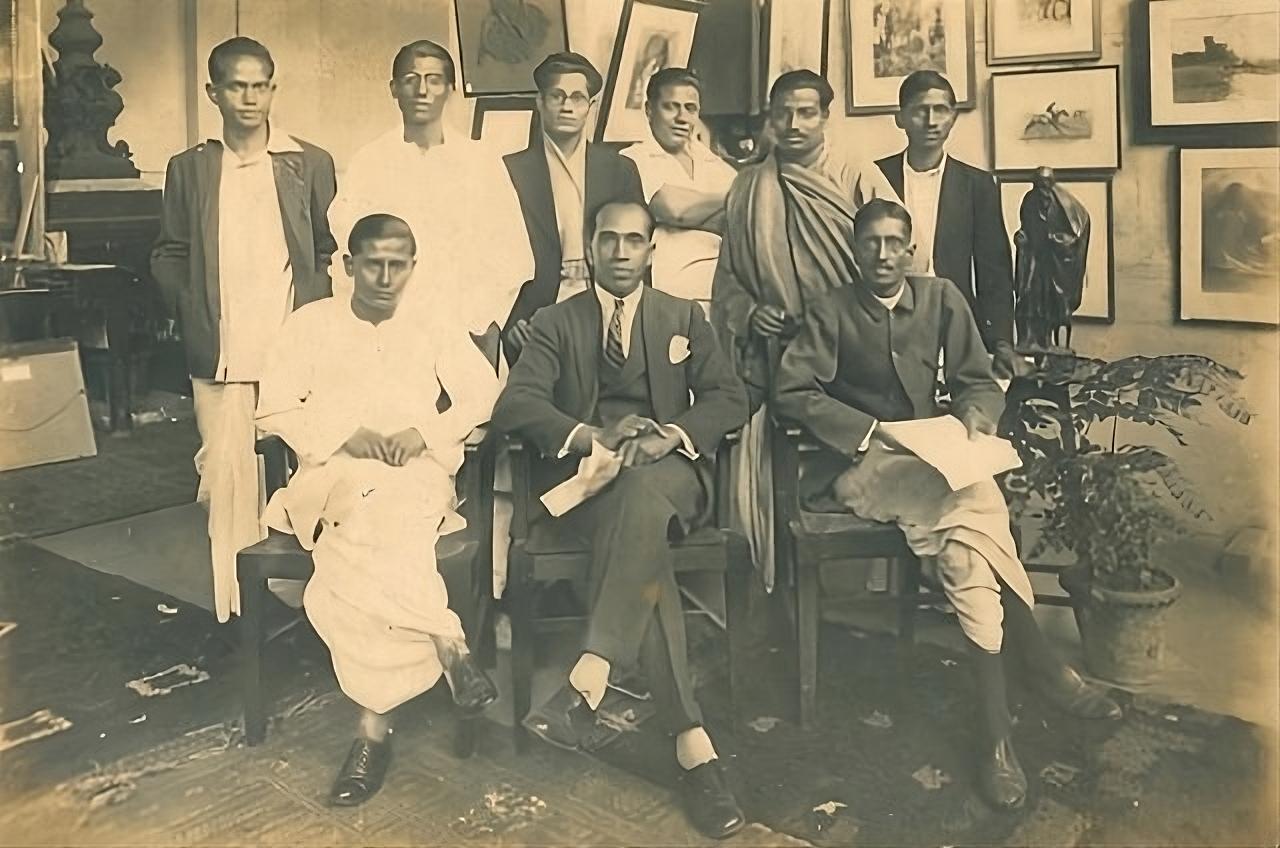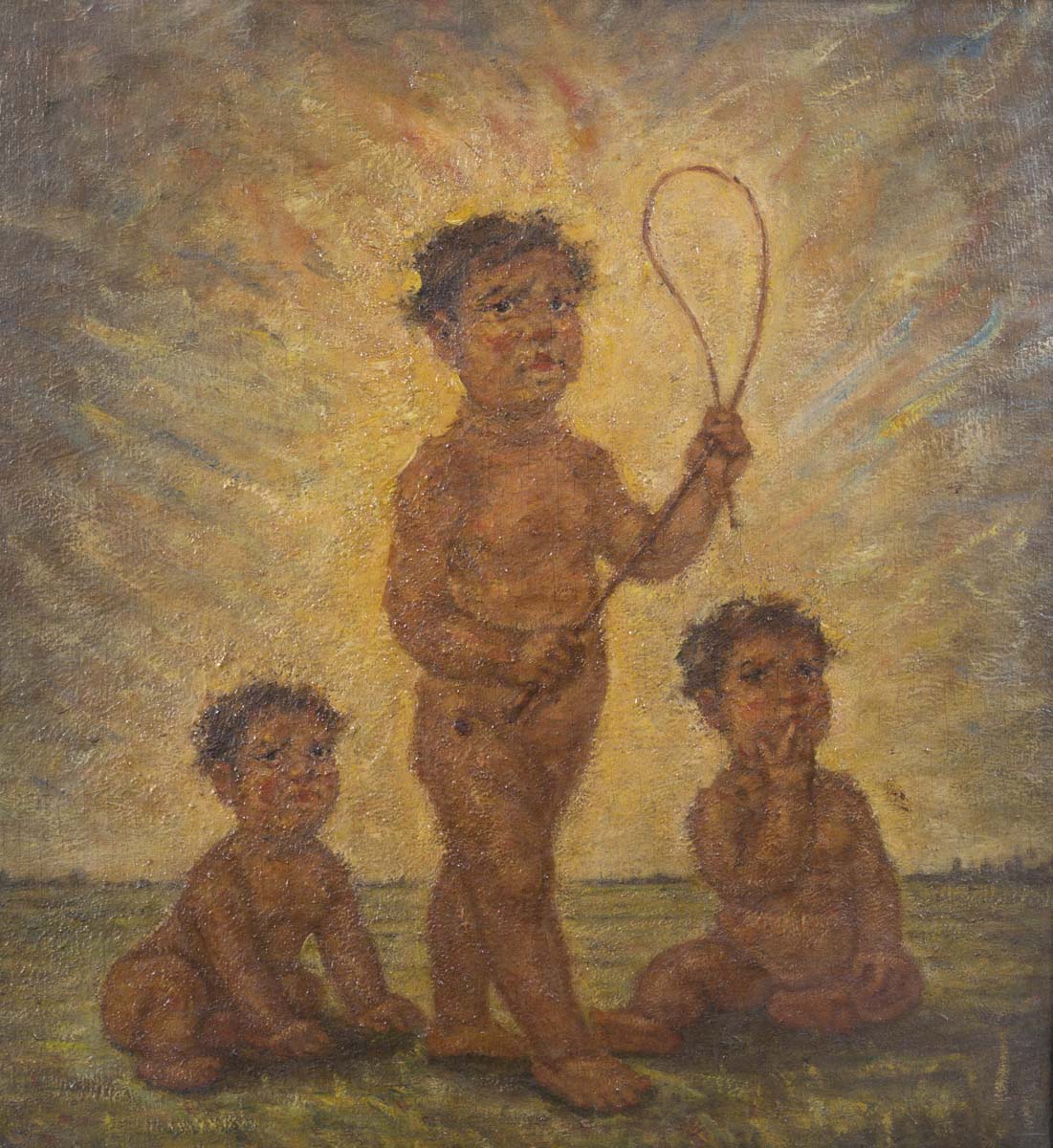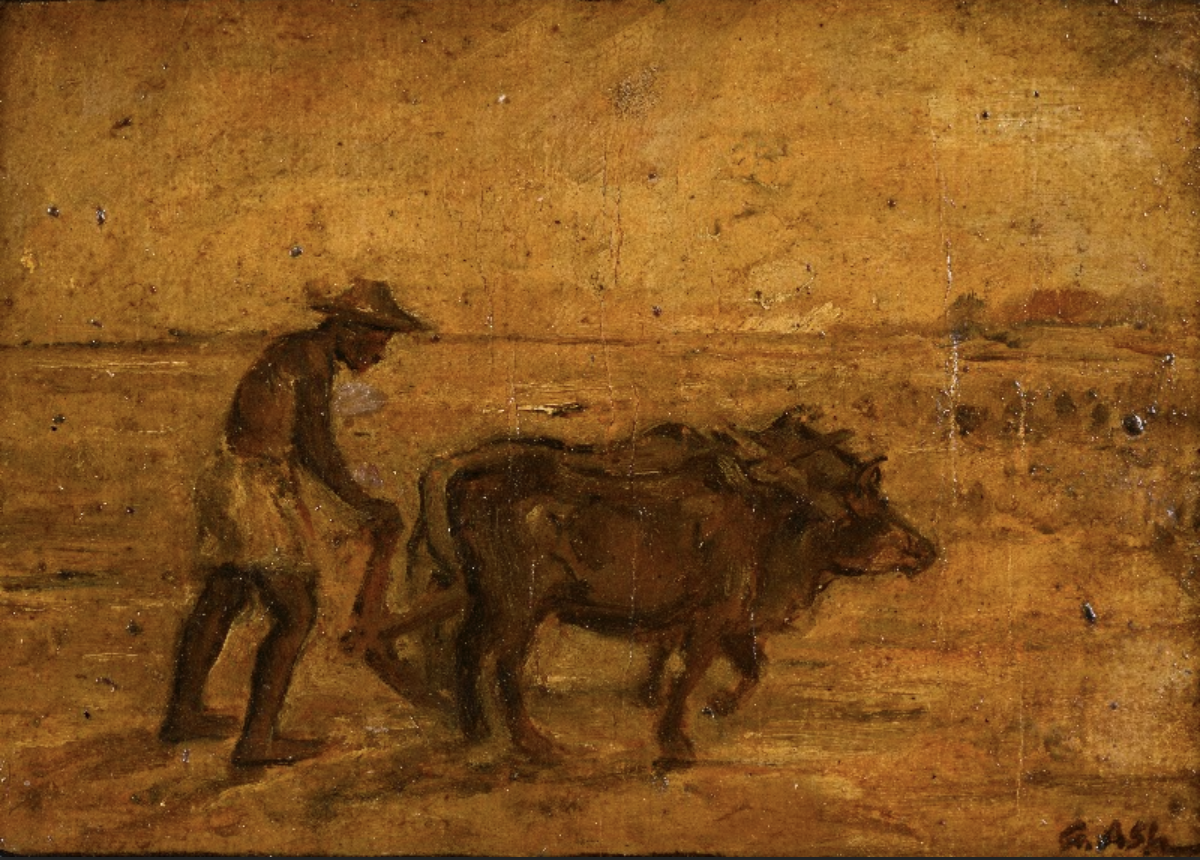The latest exhibition Gobardhan Ash Retrospective (1929 – 1969) presented by Prinseps at Kolkata Centre for Creativity is a testament to the artist’s unwavering commitment to experimentation and innovation. While some artists may find comfort in sticking to a particular style or technique, Ash thrives on pushing the boundaries of his craft. His willingness to explore new avenues and challenge conventional norms has earned him both critical acclaim and adoration from art enthusiasts around the world. One of the most intriguing aspects of Ash’s work is his ability to imbue his creations with layers of meaning and symbolism. Every brushstroke, every hue, every composition tells a story – a story that is open to interpretation yet deeply personal to the artist. As viewers navigate through the labyrinth of his imagination, they are invited to uncover the hidden truths that lie beneath the surface, to embark on a journey of self-discovery and introspection. As visitors step into the gallery space, a sensory feast – a symphony of colours, textures, and forms that beckon them to explore further, greets them. From the moment they set foot inside, they are transported to a realm where reality and imagination converge, where boundaries blur and possibilities abound. In an interview with Dilpreet Bhullar, the curators of the exhibition Brijeshwari Kumari Gohil and Harsharan Bakshi unfold the making of Gobardhan Ash Retrospective (1929 – 1969).

Dilpreet Bhullar (DB): How does Gobardhan Ash’s work contribute to the evolution of modernist art within the context of Bengali culture?
Brijeshwari Kumari Gohil (BKG) and Harsharan Bakshi (HB): Bengali culture would be too wide a spectrum to navigate or categorise per se, but the Bengal School of Art was the cradle of Indian modernism in the context of art. Tagore, Nandalal Bose and many others contributed tremendously to the birth and evolution of modernism.
The region was a melting and meeting point for literaries, artists, thinkers and knowledge seekers. One cannot place Gobardhan Ash as an artist of the Bengal School. However, his rigidity to not conform to any set institution and his quest to forge his own creative path added value to the evolution of modernism in India as a whole. The Young Artists’ Union and the Art Rebel Centre gave a voice and platform to artists and contributed to the evolution of modernist art.
DB: What are the distinctive characteristics of Gobardhan Ash’s artistic style compared to other Bengali modernist artists?
BKG and HB: I do not think one can simply compare and contrast within Bengali modernist artists. Yes, the Bengal School (which Ash was not a part of, in fact countered it), which emerged out of a nationalist movement did focus on celebrating Indian art and heritage and centered around nation building and pride.
However, each artist has his or her distinctive style and so do all the modernists. Gobardhan Ash’s style is truly unique for he was a creative maestro, passionate to experiment with subject and style but also dedicated to explore every layer of his experimentation.
For example, he explored varied subject matters ranging from social realism, landscapes, portraiture, through varied mediums. Form and figure was explored uniquely so was the choice of colour. The artistic genius took precedence, the depth of art sought to be measured in the narrative it projected rather than technique. What is distinctive is his pattern of not confining to a set theme or style even within his own artistry. There is creative expressionism and artistic experimentation till the very end.

DB: How does Gobardhan Ash’s background and upbringing influence his artistic expression and choice of themes?
BKG and HB: Ash’s art is testimony to the fact that he was heavily influenced and impacted by what he saw. Hailing from a simple family in Begampur, Gobardhan Ash used his art as a form of expressing and emoting what he saw. There is something raw and stark about his works but there is also a level of sensitivity. He would paint the places he saw, the riverbank, the train station, village scenes.
The people he passed and met were his subjects, each of which had a unique identity in the narrative he painted and sketched.
Conversations he had with himself or introspective moments were part and parcel of the portraits he created from age 27 up until 89. Techniques and mediums were explored through his portraits. Perhaps the many layers to his own personality as he aged.

DB: In what ways does Gobardhan Ash challenge traditional artistic conventions through his modernist approach?
BKG and HB: Gobardhan Ash challenged traditional artistic norms by rejecting British education and founding the Young Artists’ Union and Art Rebel Centre in the 1930s, pioneering modernism in India. Ash’s mastery of techniques like cross-hatching in his self-portraits showcases innovative approaches that break away from classical norms. His avant-garde ‘Avatar Series’ from the late 1940s blends primitive and folk influences, sparking dialogue and experimentation. Through social realism works depicting street beggars, or villagers labouring in the fields; he made powerful social statements evident throughout his oeuvre. On one side, he’d draw portraits of prominent personalities such as Ramakrishna Paramahansa. Still, he would give equal importance, if not more, to the plight of a cobbler’s son on the street or a farmer’s child. Overall, Ash fostered experimentation, innovation, and social commentary, leaving a significant mark on the Indian art scene.
DB: What curatorial strategies were used to keep the current audience engaged with the work of Gobardhan Ash?
BKG and HB: Thematic Curation: Artworks were thematically organised, showcasing each distinct creative phase in Ash’s career, providing a comprehensive view of his artistic evolution.
Archival Material: Documents like catalogues, photographs, and memorabilia were incorporated, offering valuable insights into Ash’s life and career.
Contextual Information: Detailed information about Ash’s life and influences deepened viewers’ understanding of his artistic journey and significance in Indian art history.
Interactive Elements: Engaging digital presentations included Ash’s sketches from his sketchbook, old photographs, newspaper coverage, awards received, and letters written to and by the artist, offering immersive insights into his life and work.
DB: From a curator’s perspective how would you evaluate the significance of Gobardhan Ash’s oeuvre within the broader context of Indian modernist art?
BKG and HB: Ash’s work marks a pivotal shift towards modernism in early to mid-20th-century India. Rejecting British art education norms, he established the Young Artists’ Union and Art Rebel Centre, fostering a progressive approach to art. His diverse repertoire, from self-portraits to landscapes and his thematic series, showcases his versatility and mastery. The innovative ‘Avatar Series’ in the 1940s sparked dialogue and experimentation, influencing modernist artists. His influence on Zainul Abedin, Ganesh Haloi, and Ganesh Pyne underscores his impact on Indian modern art. Gobardhan Ash’s rebellion against tradition, stylistic diversity, and influence on artistic discourse make him a key figure in Indian art’s evolution towards modernism.
DB: What impact did Gobardhan Ash have on the wider art community in Bengal, both during his lifetime and in subsequent generations?
BKG and HB: As an early Indian modernist, Ash’s influence extended beyond his artworks. During his lifetime, Gobardhan Ash had a significant impact on the wider art community in Bengal by mentoring and inspiring numerous students and artists, including renowned figures like Zainul Abedin, Gopal Ghose, and Ganesh Haloi. He provided a nurturing environment for his students and budding talents through his workshops and interactions. Highlighting his role as a mentor, he founded the Fine Art Mission free Art school in Begumpur in 1956, facilitating dispensed paper, paint, and brushes to the students along with his guidance; contributing significantly to the local art community.
Gobardhan Ash Retrospective (1929 – 1969), presented by Prinseps, Kolkata Centre for Creativity, March 29 – April 21, 2024.













